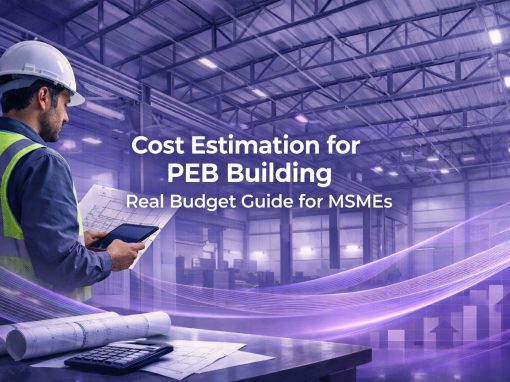Table of Contents
📢 November 2025 GST Collection Update
India’s GST revenue for November 2025 stood at ₹1.70 lakh crore. Here’s the detailed breakup:
-
CGST: ₹34,843 Cr
-
SGST: ₹42,522 Cr
-
IGST: ₹92,910 Cr (includes import GST)
Total refunds: ₹18,196 Cr
Net GST Revenue: ₹1,52,079 Cr (↑ 1.3% YoY)
India’s Goods and Services Tax (GST) system has seen consistent growth in revenue collection, with the government crossing the ₹1.6 lakh crore mark per month. The highest-ever GST collection was recorded in April 2024 at ₹2.10 lakh crore, showcasing a strong compliance framework and economic recovery.
Here you will learn about monthly and yearly trends on GST collections, factors influencing revenue, and future projections. With increasing enforcement measures and GST slab rationalization expected in 2025, businesses must stay updated with these trends.
Year-wise Trends
Since GST was implemented in July 2017, the annual revenue collection has seen steady growth. Below is a historical GST collection trend.
| Financial Year | Total GST Collection (₹ Lakh Crore) | Average Monthly Collection (₹ Crore) |
|---|---|---|
| 2017-18 | ₹7.19 Lakh Crore (Jul-Mar) | ₹89,875 Cr |
| 2018-19 | ₹11.77 Lakh Crore | ₹98,083 Cr |
| 2019-20 | ₹12.22 Lakh Crore | ₹1.02 Lakh Cr |
| 2020-21 | ₹11.36 Lakh Crore | ₹94,667 Cr (COVID Impact) |
| 2021-22 | ₹14.83 Lakh Crore | ₹1.24 Lakh Cr |
| 2022-23 | ₹18.10 Lakh Crore | ₹1.51 Lakh Cr |
| 2023-24 | ₹19.80 Lakh Crore | ₹1.65 Lakh Cr |
| 2024-25 | ₹22,08,861 crore | ₹1,84,071.75 crore |
Monthly GST Collection Trends 2024-2025
| Month | GST Collection (₹ lakh crore) | YoY Growth (%) | Key Observations |
| November 2025 | ₹1.70 | ~0.7% | Slight dip due to GST rate rationalisation; domestic consumption steady and imports moderately strong. |
| October 2025 | ₹1.96 | ~4.6% | Strong festive-season driven demand; healthy domestic spending and strong import-related GST. |
| August 2025 | ₹1.86 | ~6.5% | Marginal fall in GST from imports; domestic activity remained the primary revenue driver. |
| July 2025 | ₹1.95 | ~7.5% | Fourth consecutive month above ₹1.8 lakh crore; strong import revenues and higher refunds. |
| June 2025 | ₹1.85 | ~6.2% | Import growth remained strong; refunds increased; domestic demand stable. |
| May 2025 | ₹2.01 | ~16.4% | Sustained ₹2 lakh crore+ collections; strong IGST from imports and stable domestic demand. |
| April 2025 | ₹2.36 | ~12.6% | Record-high GST collection; strong domestic demand, inter-state trade, and faster refunds. |
| March 2025 | ₹1.96+ | ~9.9% | Growth driven by streamlined GST administration and expanding tax base. |
| February 2025 | ₹1.83 | ~10.2% | Continued improvement in compliance and reporting efficiency. |
| January 2025 | ₹1.95 | ~12% | Strong enforcement and filing discipline; highest monthly collection till then. |
| December 2024 | ₹1.76 | ~8% | Year-end filing surge and improved business activity. |
| November 2024 | ₹1.82 | ~10% | Boost from festive-season purchases. |
| October 2024 | ₹1.87 | ~9% | Strongest festive-month collection of that year. |
| September 2024 | ₹1.73 | ~6% | Stable services and export-linked collections. |
| August 2024 | ₹1.75 | ~7% | Manufacturing-driven growth. |
| July 2024 | ₹1.59 | ~5% | Temporary slowdown linked to post-Budget adjustments. |
| June 2024 | ₹1.74 | ~6% | Higher compliance and better ITC matching. |
| May 2024 | ₹1.73 | ~4% | Seasonal dip due to lower transaction volumes. |
| April 2024 | ₹2.10 | ~12% | Then highest-ever GST collection; year-end filings surge. |
| March 2024 | ₹1.78 | ~9% | Pre-FY-end push in invoicing and transactions. |
| February 2024 | ₹1.68 | ~6% | Stable collections despite shorter month. |
| January 2024 | ₹1.72 | ~6% | Steady revenue compared to December 2023. |
Key Takeaways
- April 2025 remains the highest-ever GST collection at ₹2.36 lakh crore, driven by year-end filings, strong inter-state trade, and faster refunds.
- May 2025 held the line with ₹2.01 lakh crore, the second-highest monthly figure, supported by high IGST on imports and stable domestic demand.
- July 2025 has now matched January 2025 at ₹1.95 lakh crore, making them joint-third in record collections — both reflecting steady compliance and wider tax coverage.
- October–November 2024 saw festive tailwinds push revenues beyond ₹1.80 lakh crore, a trend expected again in Q3 FY26.
- For over 10 consecutive months, monthly GST collections have stayed above ₹1.7 lakh crore, signalling sustained consumption and a broadening tax base.
- While no major rate changes were announced in the Full Budget 2024, the upcoming GST Council meeting may revisit slab rationalisation and input credit tweaks — which could shape collection trends heading into the festive quarter.
Source of all publications on web are from these PDFs which you can review for every single month:
- November 2025
- October 2025
- August 2025
- July 2025
- June 2025
- May 2025
- April 2025
- March 2025
- January 2025
- December 2024
- November 2024
- October 2024
- September 2024
- August 2024
- July 2024
- June 2024
- May 2024
- April 2024
Older links can be taken from here – https://gstcouncil.gov.in/gst-revenue
Highest & Lowest GST Collections Ever Recorded
- April 2024: ₹2.10 lakh crore (Record high due to financial year-end filings).
- April 2020: ₹32,172 crore (COVID-19 lockdown impact).
May-25 Month: India’s GST Collection Surges 16.4% to ₹2.01 Lakh Crore in May 2025
Factors Affecting GST Collection
GST collections continue to be shaped by a mix of economic momentum, compliance reforms, industry performance, and policy direction. With July 2025 marking ₹1.95 lakh crore in gross collections, here’s what’s driving the numbers:
Economic Growth & Consumer Demand
India’s Q1 FY26 GDP growth held steady, with manufacturing PMI at a 16-month high in July. Consumer and industrial demand remain resilient across metro and tier-2 markets.
-
Observation: Monthly GST revenues have remained above ₹1.8 lakh crore for four straight months, supported by steady domestic demand and strong B2B trade.
-
Data Point: July’s IGST from imports: ₹40,262 crore (+9.7% YoY), indicating robust inbound trade activity.
Tax Compliance & Evasion Control
With mandatory e-invoicing now extended to businesses over ₹5 crore (from January 2025), backend accuracy has significantly improved. Risk-profiling tools and AI-enabled reconciliations are actively flagging non-filers and input-credit misuse.
-
Result:
-
Refund processing timelines have shortened.
-
July 2025 refunds: ₹27,147 crore — up 66.8% YoY, reflecting increased refund activity and cleaner documentation.
-
CGST zones report higher voluntary disclosures post e-invoicing alerts.
-
Policy Signals & Council Activity
While slab rationalisation (merging 12% & 18% into 15%) is still pending, the GST Council’s March and April 2025 meetings reignited the conversation. Businesses are already preparing pricing strategies around this possibility.
-
Update: The next GST Council meet (expected Aug–Sep) may table final recommendations, especially post the Full Budget 2024’s neutral stance on rates.
-
Impact:
-
Pre-emptive compliance by businesses to avoid scrutiny
-
Adjustments in pricing and ITC claim behaviour to stay prepared for potential rate shifts
-
Industry Trends
Key sectors continue to anchor revenue:
-
Manufacturing: Especially in auto components, construction materials, and processed food
-
Logistics & warehousing: GST collected through e-way bills and digital freight platforms continues to grow
-
Digital services & e-commerce: Rise in B2B SaaS and platform-led retail sees higher 18% slab activity
MSMEs, however, remain a mixed picture:
-
Constraints: Credit access and refund processing lag (especially under inverted duty structure)
-
Relief: Faster July refunds and rising UPI-linked sales are helping smaller units rebound in urban clusters
Government Measures to Boost GST Revenue
Since January 2025, the government has ramped up tech-driven enforcement and backend automation to widen the GST base and reduce leakage. The focus has shifted from just filing deadlines to predictive compliance, real-time risk monitoring, and quicker refund processing.
Here are the latest measures in force:
1. E-Invoicing Mandate Expanded Further
From 1 Jan 2025, e-invoicing became mandatory for all businesses with turnover above ₹5 crore. The Council is reviewing a proposal to reduce this threshold to ₹2 crore by FY26, targeting deeper MSME integration into the GST system.
2. AI-Driven Anomaly Detection at Scale
AI-based return scrutiny is now rolled out nationwide. Systems automatically flag:
- Mismatches between GSTR-1 and 3B
- Monthly vs. quarterly turnover spikes
- Repeated IGST refund claims on near-identical invoices
Several zones (like CGST Mumbai and Bengaluru) report a 12–15% rise in voluntary correction filings post-flagging.
3. Unified Enforcement Dashboards in Action
As of March 2025, state GST offices now have access to a centralised real-time fraud tracking system that integrates:
- e-Way Bill data
- PAN-based turnover history
- Geo-tagged invoice trails
States like Gujarat, Rajasthan, and Tamil Nadu have started using this to auto-flag shell entity chains and fake input tax credit linkages.
4. Faster Refunds Through Backend Overhaul
July 2025 refunds hit ₹27,147 crore, with processing times now averaging 15–20 days, down from 30+ last year. Key backend upgrades:
- Auto-correlation of shipping + export data from ICEGATE
- Single-click verification of inverted duty refunds for textile, footwear, and fertiliser exporters
5. Upcoming Measures Under Consideration
-
Risk-based registration system (in pilot stage): New businesses will receive a risk score at onboarding, determining their filing and refund review frequency.
-
Mandatory reconciliation advisory system: Taxpayers may soon receive automated mismatch alerts before filing windows close—reducing post-filing notices and delays.
GST Council meetings are being organized on regular basis to take necessary steps to boost GST revenue. Below are few recent meetings happened which takeaways are available to explore –
- Takeaways from the 55th GST Council Meeting with Agenda Highlights
- 54th GST Council Meeting: Key Decisions, Tax Changes, and Future Plans
Future of GST Collection in India (2025 & Beyond)
India’s GST collections are on a stable upward path, supported by formalisation, digital compliance, and stronger enforcement. With monthly revenues crossing ₹1.95 lakh crore in July 2025 and ₹2 lakh crore earlier this year, the tax system is showing resilience and maturity.
The proposed merger of 12% and 18% slabs into a single 15% rate is expected to return to the agenda at the 56th GST Council meeting, likely in August. If implemented, it could simplify classification but may require pricing adjustments across key sectors.
On the compliance front, AI-powered audits, e-invoice tracking, and return mismatch alerts are reducing evasion and improving accuracy. Refund processing has also improved, with July refunds reaching ₹27,147 crore, up nearly 67% year-on-year.
Expansion of the GST base is on the horizon, with ongoing discussions to bring petroleum, online gaming, and digital assets into the framework. These changes could add new revenue streams and reduce indirect tax complexity.
Businesses should watch for Council announcements, prepare for possible slab shifts, and continue investing in smart GST tools to stay ahead of policy changes.
References:
- GST Council Website gstcouncil.gov.in
- Ministry of Finance finmin.nic.in
- Reserve Bank of India (RBI) Reports rbi.org.in
- Economic Survey 2023-24 indiabudget.gov.in
—–
FAQs
Who is the highest GST payer in India?
Which state top the GST collection?
A product manager with a writer's heart, Anirban leverages his 6 years of experience to empower MSMEs in the business and technology sectors. His time at Tata nexarc honed his skills in crafting informative content tailored to MSME needs. Whether wielding words for business or developing innovative products for both Tata Nexarc and MSMEs, his passion for clear communication and a deep understanding of their challenges shine through.






